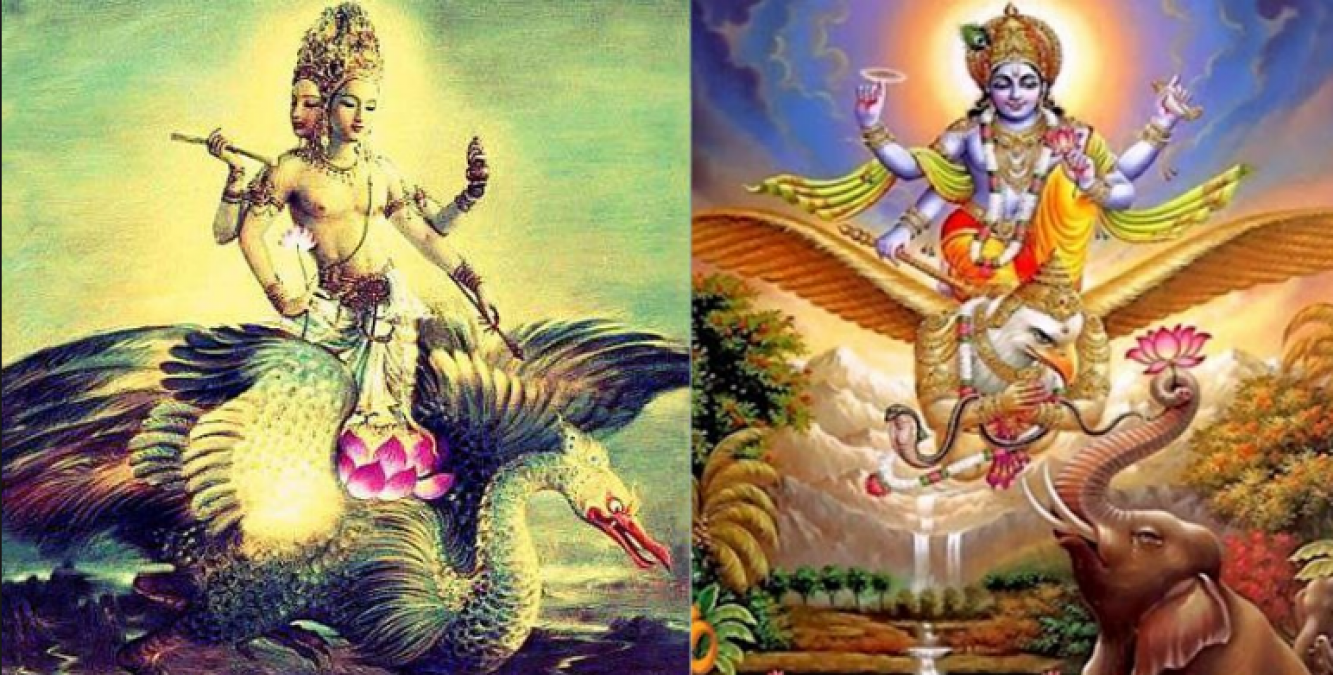
Each Hindu deity has a particular animal-vehicle or vahana on which it travels. The Sanskrit word translates literally as "that which carries," or "that which pulls." These vehicles, which are either animals or birds, represent the various spiritual and psychological forces that carry each deity and represent it. So important are the vahanas that deities are seldom depicted without their corresponding creatures. The vahanas may wear a saddle upon which the deity rides or they may pull a chariot driven by the deity. They are sometimes depicted walking alongside the deity.
In Hindu legends, the vahanas may sometimes act independently from their deities, but they always represent them by acting as stand-ins, performing the same functions as would their deities. They may, however, also offer additional talents that the deity would otherwise lack. Often, elaborate cultural mythologies exist explaining how each animal became the vahana of a particular deity, and sometimes the stories involve the transformation of lesser gods into the vahana of a major deity.
Vehicles as Symbols Each deity's vahana can be seen as a symbolic representation of his or her "power" or meaning within the pantheon of Hindu deities. For example: Goddess Saraswati's vehicle, the graceful and beautiful peacock, for example, represents her status as the controller of the pursuit of performing arts. Vishnu sits on the primal serpent, which represents the desire of consciousness in humankind. Shiva rides the Nandi bull, which stands for the brute and blind power, as well as the unbridled sexual energy in man—the qualities only he can help us control.
Shiva's consort, Parvati, Durga or Kali, rides on a lion, which symbolizes mercilessness, anger, and pride—vices she can help her devotees check.
also read Buddha Purnima 2019: Know why and how it is being celebrated
Ganesha's carrier, a mouse represents the timidity and nervousness that overwhelm us at the onset of any new venture—feelings that can be overcome by the blessings of Ganesha.
The vahanas may represent talents that fill in shortcomings in the deity's abilities. It can be argued, for example, that the elephant god, Ganesha, gains subtlety of insight through the perceptions of his small mouse vahana. And it was only with the help of her lion vahana that Durga manages to destroy the demon Mahishasura. In this manner, the vahanas are in the tradition of spirit animal symbols found in mythologies worldwide.
Some scholars have also suggested that the vahanas represent the minds of human followers, which are thereby allowed to be guided by the deity's wishes.
Below is a list of Hindu gods and goddesses who are inseparably linked with their respective vahanas:
Aditya—seven horses
Agni—the ram
Brahma—seven swans
Durga—the lion
Ganesha—the mouse
Indra—the elephant
Kartikya—the peacock
Lakshmi—the owl
Saraswati—the swan or the peacock
Shakti—the bull
Shani—the crow
Sheetala—the donkey
Shiva—Nandi, the bull
Varuna—seven swans
Vayu—a thousand horses
Vishnu—Garuda, the eagle & Adi Shesha, the serpent
Vishwakarma—the elephant
Yama—the male buffalo
also read The Quran has mentioned Jesus Christ; Check what it reveals